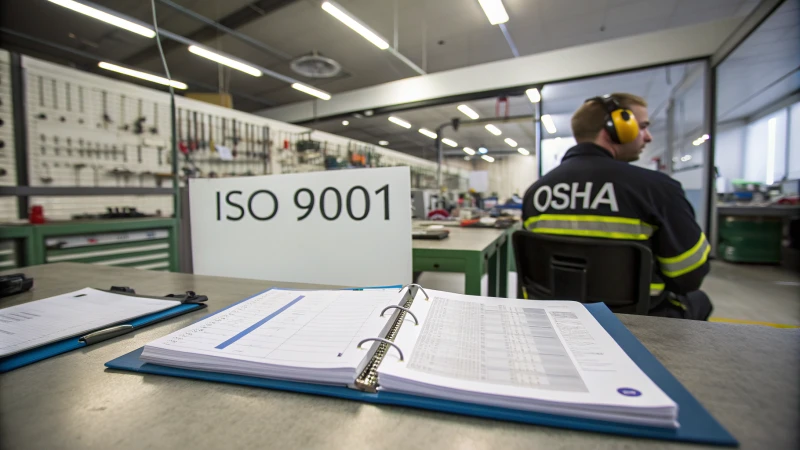
In the pet food manufacturing industry, ensuring that your equipment meets safety and quality standards is critical. Failure to comply with industry regulations can result in contaminated products, costly recalls, and damage to brand reputation. Poor equipment maintenance and subpar compliance can also lead to safety hazards, inefficiency, and legal repercussions. To mitigate these risks, manufacturers must adhere to stringent regulatory guidelines, implement best practices, and invest in quality control measures.
To ensure pet food equipment meets industry safety and quality standards, manufacturers should adhere to regulatory requirements such as FDA, USDA, and FSMA guidelines, implement robust Good Manufacturing Practices (GMPs), conduct regular inspections, and utilize food-grade, hygienic materials in equipment design. Additionally, preventive maintenance, hazard analysis, and worker training are essential for ensuring compliance and product safety.
Understanding the essential requirements and best practices for pet food equipment compliance will help manufacturers avoid regulatory issues and ensure product integrity. Below, we explore key steps, industry regulations, quality control strategies, and equipment specifications needed to meet safety standards.
Regulatory Requirements for Pet Food Equipment
1. FDA and FSMA Compliance
The Food and Drug Administration (FDA) oversees the safety of pet food products under the Food Safety Modernization Act (FSMA). The FSMA outlines key preventive measures for pet food manufacturers, requiring them to:
- Identify hazards and implement Hazard Analysis and Critical Control Points (HACCP) systems.
- Maintain sanitation controls to prevent cross-contamination.
- Ensure proper storage and handling of ingredients and finished products.
2. USDA and AAFCO Guidelines
The United States Department of Agriculture (USDA) regulates raw materials used in pet food, especially animal-derived ingredients. Meanwhile, the Association of American Feed Control Officials (AAFCO) sets labeling and nutritional guidelines for pet food manufacturers.
3. GMPs and Hygienic Design
Good Manufacturing Practices (GMPs) are essential for ensuring pet food equipment remains sanitary and operates efficiently. The equipment should meet:
- Hygienic design principles, including smooth, non-porous surfaces.
- Corrosion-resistant materials, such as stainless steel, to prevent contamination.
- Proper drainage and cleaning mechanisms to avoid bacterial buildup.
Key Features of Compliant Pet Food Equipment
1. Material Selection for Safety
Pet food processing equipment must be made from food-grade materials that resist corrosion and microbial growth. The most commonly used materials include:
| Material | Benefits |
|---|---|
| Stainless Steel (304/316) | Corrosion-resistant, easy to clean, non-reactive with food |
| Food-Grade Plastics | Lightweight, durable, resistant to microbial growth |
| Teflon-Coated Surfaces | Prevents sticking, easy to sanitize |
2. Sanitary Design Considerations
Pet food equipment should be designed for easy cleaning and sanitation to comply with safety standards. Key features include:
- Seamless welding and smooth finishes to prevent residue buildup.
- Sloped surfaces for proper drainage and cleaning efficiency.
- Quick disassembly mechanisms for thorough sanitation.
Quality Control Strategies for Pet Food Processing Equipment
1. Hazard Analysis and Critical Control Points (HACCP)
HACCP is a systematic approach to food safety that helps identify and mitigate risks. It involves:
- Conducting a risk assessment of equipment contamination points.
- Establishing critical limits for temperature, moisture, and hygiene.
- Implementing corrective actions if safety parameters are breached.
2. Regular Equipment Inspections
Routine inspections ensure that pet food equipment functions optimally. Inspection protocols should include:
| Inspection Type | Frequency | Purpose |
|---|---|---|
| Visual Inspections | Daily | Identify wear, contamination, and improper functioning |
| Sanitation Audits | Weekly | Ensure compliance with cleaning protocols |
| Preventive Maintenance | Monthly | Detect potential breakdowns before they occur |
3. Validation and Testing
Manufacturers must validate that their equipment meets safety standards through:
- Microbiological testing to check for bacterial contamination.
- Residue testing after cleaning procedures.
- Performance testing to ensure uniform product consistency.
Training and Compliance for Pet Food Equipment Operators
1. Employee Training Programs
Workers handling pet food equipment should receive comprehensive training in:
- Hygiene and sanitation protocols to prevent contamination.
- Proper machine operation to ensure safety and efficiency.
- Emergency response procedures for handling equipment failures.
2. Recordkeeping and Documentation
Maintaining detailed records is essential for compliance. Necessary documentation includes:
- Sanitation logs tracking cleaning schedules.
- Maintenance reports detailing inspections and repairs.
- Safety audits to confirm adherence to regulations.
The Role of Technology in Enhancing Equipment Compliance
1. Automated Cleaning and Sanitization Systems
Modern pet food equipment integrates Clean-in-Place (CIP) and Steam-in-Place (SIP) systems, which:
- Reduce manual labor and cleaning time.
- Ensure consistent sanitation across all equipment surfaces.
- Minimize the risk of cross-contamination.
2. IoT and Smart Monitoring
Connected equipment with Internet of Things (IoT) sensors helps track:
- Temperature and humidity levels to maintain ingredient freshness.
- Vibration and wear detection for predictive maintenance.
- Real-time compliance reporting to streamline audits.

A display of pet food certification logos emphasizing quality and safety.
Conclusion
Ensuring that pet food equipment meets industry safety and quality standards requires a comprehensive approach. From compliance with FDA and USDA regulations to implementing HACCP plans and sanitary design principles, manufacturers must proactively address safety concerns. Regular inspections, preventive maintenance, and employee training further enhance compliance and efficiency. By integrating advanced technologies like IoT monitoring and automated cleaning systems, pet food processors can improve product safety and operational effectiveness.
Contact Us for High-Quality Pet Food Processing Equipment
Are you looking for reliable, FDA-compliant pet food equipment? Our team specializes in high-quality, hygienic, and efficient pet food processing solutions. Contact us today for expert guidance and custom equipment tailored to your needs!










